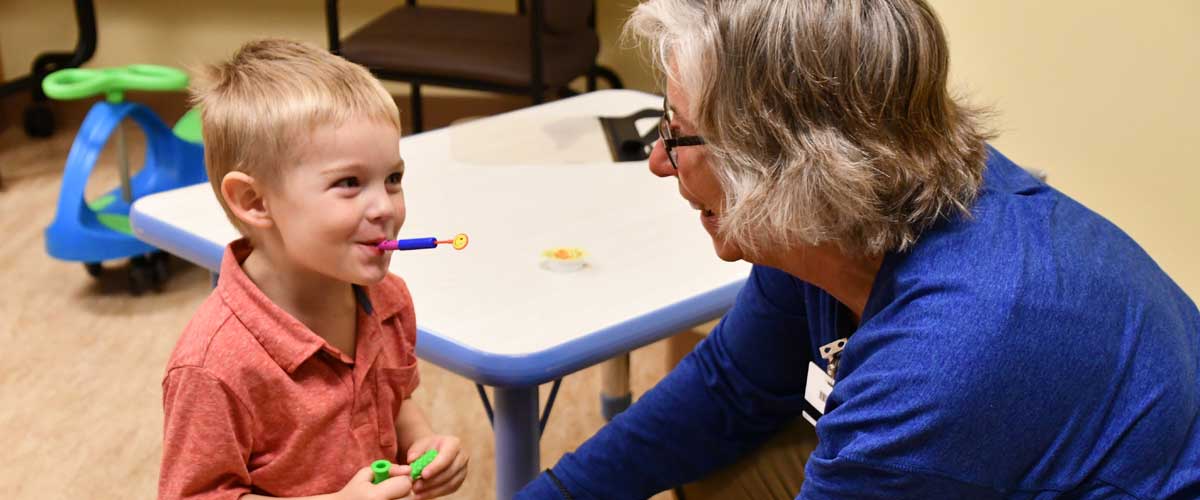Quality, individualized treatment in the areas of:
- Articulation – pronouncing sounds to make words
- Receptive Language – understanding of spoken or written language
- Auditory Processing – how the brain processes information that it hears
- Expressive Language – the ability to communicate wants, needs, thoughts, and ideas
- Pragmatics – social understanding and appropriate use of language in social situations
- Oral Motor Weakness – weakness of the tongue, jaw, lips and facial muscles
- Tongue Trust – when the tongue movies forward inappropriately during speech
- Apraxia – disruption in the signal from the brain to the muscles to coordinate the movement of the lips, tongue, jaw and facial muscles
- Cognitive Impairments – disruptions in the ability to think, put together ideas, concentrate, reason and remember

